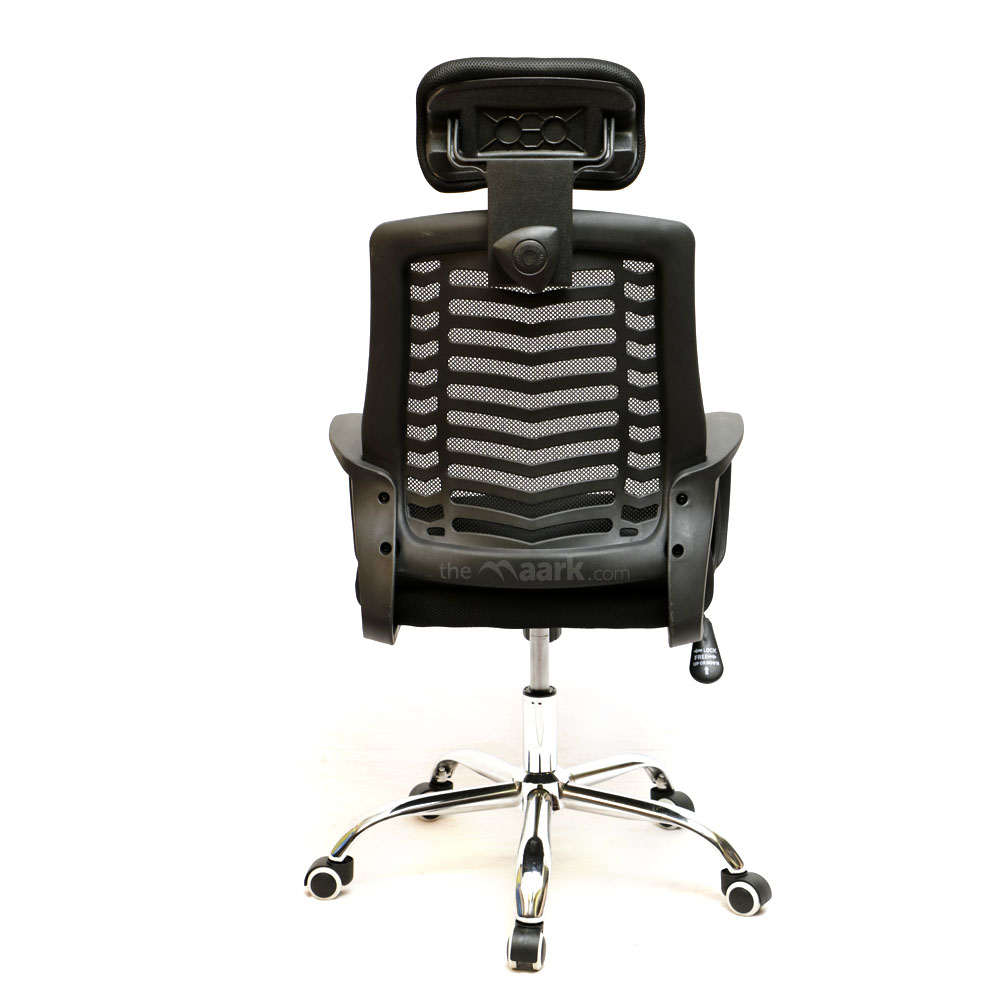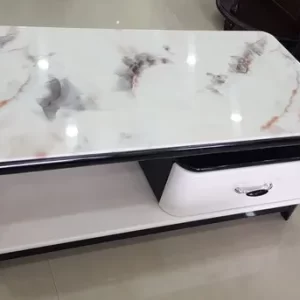Sale
Headrest Chair
KSh 12,500.00 Original price was: KSh 12,500.00.KSh 9,500.00Current price is: KSh 9,500.00.
(In Stock)
Categories: Home furniture, Office Chairs
Tag: Headrest chair
A headrest office chair is an ergonomic chair designed to support the head and neck, enhancing comfort during long periods of sitting. It is commonly used in work environments where prolonged sitting is necessary, such as offices, home workspaces, or executive settings. Here’s a detailed description:
1. Design and Structure:
- Overall Structure:
- Ergonomic Shape: The chair is designed to support the natural curve of the spine, with a high backrest that includes an integrated or adjustable headrest. The chair’s structure typically follows the contours of the body, providing support from the lower back up to the head.
- Adjustability: Most headrest office chairs offer multiple adjustable features, including the height, tilt, and recline functions, allowing users to customize the chair to their specific comfort needs.
- Headrest:
- Integrated vs. Adjustable: The headrest may be either integrated into the backrest or designed as an adjustable and detachable component. Adjustable headrests can be moved up or down, and sometimes even tilted forward or backward, to suit different heights and sitting preferences.
- Shape and Padding: The headrest is usually padded with foam or memory foam for comfort, and its shape is contoured to cradle the back of the head and neck. Some headrests are wider to support the entire head, while others are narrower and more targeted.
- Material: The headrest may be upholstered in the same material as the rest of the chair, such as leather, mesh, or fabric, providing a cohesive look and feel.
2. Seating and Comfort:
- Seat Cushion:
- Padding: The seat cushion is generally thickly padded with high-density foam or memory foam to provide comfort and support during long hours of use. The padding helps distribute body weight evenly, reducing pressure points.
- Contoured Design: The seat may be contoured to follow the natural curve of the thighs, promoting proper posture and circulation. Some designs include a waterfall edge, which reduces pressure on the back of the legs.
- Material: The seat is usually covered in durable, comfortable material, such as leather, faux leather, mesh, or fabric, chosen for its breathability, durability, and aesthetic appeal.
- Backrest:
- High Backrest: The backrest is typically high enough to support the entire back, including the upper back and shoulders. It may be padded or made of breathable mesh, depending on the design.
- Lumbar Support: Many headrest office chairs include built-in lumbar support to encourage proper spinal alignment. This support is often adjustable, allowing users to find the most comfortable position for their lower back.
- Recline Function: The backrest usually features a recline function, which can be locked at various angles or allowed to tilt freely, providing flexibility in seating positions. Some chairs also offer a synchronized tilt mechanism, where the seat and backrest move together for balanced support.
3. Base and Mobility:
- Swivel Base:
- 360-Degree Swivel: The chair typically has a 360-degree swivel base, allowing for easy movement and access to different parts of the workspace without needing to stand up.
- Casters:
- Smooth Mobility: The base is equipped with casters (wheels) that allow for smooth and easy movement across various floor types, including carpet, hardwood, and tile. The casters are usually made from durable materials like nylon or rubber to prevent damage to flooring.
- Sturdy Base: The base is typically made from metal (such as aluminum or steel) or heavy-duty plastic, providing stability and support. It often has a five-point star shape, which distributes weight evenly and prevents tipping.
4. Adjustability:
- Seat Height Adjustment:
- Gas Lift Mechanism: The seat height is adjustable using a gas lift mechanism, allowing the user to raise or lower the chair to match the height of their desk or workstation. This adjustment helps ensure that the user’s feet are flat on the floor, promoting proper posture.
- Armrest Adjustment:
- Adjustable Armrests: Many headrest office chairs feature adjustable armrests that can be moved up, down, forward, backward, and sometimes angled in or out. This allows users to find the most comfortable position for their arms, reducing strain on the shoulders and neck.
- Tilt and Recline Controls:
- Tilt Tension: The tilt tension can usually be adjusted to control the resistance of the recline, allowing users to choose how easily the chair tilts backward.
- Lockable Recline: Some chairs offer a lockable recline function, enabling users to lock the backrest in a specific position or allow it to move freely.
5. Material and Finish:
- Upholstery:
- Leather or Faux Leather: Many executive-style headrest office chairs are upholstered in leather or faux leather, offering a premium look and easy maintenance. These materials are smooth, durable, and easy to clean.
- Mesh: Mesh headrest office chairs are popular for their breathability, making them ideal for warmer climates or long hours of use. The mesh material provides airflow, keeping the user cool and comfortable.
- Fabric: Fabric-upholstered chairs are available in a variety of colors and textures, offering a softer feel and often more color options. Fabric is also breathable and can add a warmer aesthetic to the office.
- Frame: The frame and base of the chair are usually made from sturdy materials like steel, aluminum, or high-strength plastic, ensuring durability and a long lifespan.
6. Aesthetic and Style Options:
- Executive Style: Many headrest office chairs have an executive design, with a high back, plush padding, and leather upholstery. These chairs convey a sense of authority and are often used in managerial or executive offices.
- Modern and Sleek: Some designs feature clean lines, minimalistic frames, and mesh backrests for a more modern, contemporary look. These chairs are popular in tech companies, design studios, and modern office spaces.
- Color Options: Depending on the material, headrest office chairs come in various colors, from classic black, brown, and gray to more vibrant options like blue, red, or white.
7. Ergonomics and Health Benefits:
- Neck and Head Support: The headrest is specifically designed to support the neck and head, reducing strain on the cervical spine. This support is crucial for preventing neck pain and headaches, especially during extended periods of sitting.
- Posture Improvement: With its adjustable features, the chair encourages proper posture, reducing the risk of back pain and other musculoskeletal issues.
- Comfort for Long Hours: The ergonomic design, combined with ample padding and support, makes headrest office chairs ideal for people who spend long hours at a desk. The ability to recline, adjust armrests, and fine-tune the headrest ensures long-term comfort.
8. Applications:
- Office Work: Ideal for use in corporate offices, home offices, or workspaces where extended periods of sitting are required.
- Executive Suites: Often used in executive offices or boardrooms, where a combination of comfort, style, and authority is desired.
- Gaming and Home Use: Also popular for gaming setups and home offices due to the high level of comfort and support provided.
A headrest office chair is a comprehensive solution for those seeking comfort, support, and style in their workspace. Its ergonomic design, combined with a range of adjustable features, makes it suitable for a variety of professional and personal settings, ensuring that users can maintain comfort and proper posture throughout the day
Be the first to review “Headrest Chair” Cancel reply









Reviews
There are no reviews yet.